An article I wrote for Moment Magazine about racism can be read here.
.


Myriad dangers confront us and our children in the wider world. There is no need to go into detail about the various threats to our health, safety and welfare “out there.”
But then there is a clear threat to our wellbeing that is very much “in here” – part, unfortunately, of our very own world.
While the percentage of American smokers has been dropping, there are still more than 30 million users of tobacco in the U.S. today, and all too many of them, regrettably, are in the Torah-observant Jewish community.
There was a time when smoking was regarded as a harmless pastime – even, amazingly to us today, a healthy one. (“More doctors smoke Camels than any other cigarette!” boasted one 1940s ad.) Even in less distant times, the inhalation of tobacco smoke has been seen as repulsive but not suicidal.
These days, though, no one denies that smoking is a major factor in contracting terrible ailments, including heart disease and lung cancer.
According to the Centers for Disease Control (CDC), more deaths are caused each year by tobacco use than by illegal drug and alcohol abuse, vehicular injuries, suicides and murders.
Combined.
In the U.S., the mortality rate for smokers is three times that of people who never smoked. In fact, the CDC says that smoking is the most common “preventable cause of death” in the country.
“Smoking,” the agency notes, “harms nearly every organ of the body” and contributes not only to heart disease and a host of cancers but to strokes and reproductive problems.
And yet, seemingly oblivious Yidden can be seen outside shuls every erev Shabbos trying to ingest enough tar and nicotine (and, in fact, formaldehyde, lead and arsenic) to get them through the next 25 hours. And rushing out after Maariv on Motzoei Shabbos to resume their close relationships with the proven poison.
Their habit harms not only themselves but their families. Even leaving aside the specter of wage earners’ early deaths, second-hand smoke is a danger in itself. And, even in the short term and even for those who don’t smoke at home, a half-pack-a-day habit can strain the family budget to the tune of a couple thousand dollars a year.
The poison-puffers have defenses, of course, against the charge that they are harming themselves and their loved ones. Such and such a Rebbe or Gadol, they object, smoked, after all, and Rav Moshe Feinstein, zt”l, permitted smoking…
But illustrious figures of the past didn’t know the extent of the harm tobacco can wreak, and Rav Moshe’s permission was based on the principle of “shomer pesayim Hashem” – that “Hashem protects fools” (Tehillim 116:6). Fooldom is not a club to which most self-respecting people aspire; and, in any event, there is a point where foolhardiness devolves into willful blindness to established fact.
Rav Moshe’s other words, moreover, are widely ignored. In the same teshuvah he exhorted Jews to not begin smoking due to the “chashash sakanah,” the “possibility of danger.” It is no longer a mere possibility.
And then there’s the other danger our smoking poses to our children, beyond second-hand smoke, from the example being set for them.
Our community doesn’t just talk the talk of caring about our kids. We walk the walk. In fact, we run the run. We make sure that they are well-fed and clothed, that they receive strong Jewish educations, that they are mechunachim in mitzvos, and imbued with love for Torah and a Torah life. And we know that the most important part of chinuch is the example we set for our young. None of us, I hope, would think of acting in a dangerous, repulsive or irresponsible manner in front of our children.
Smoking is dangerous, repulsive and irresponsible.
Not enough? Obama smokes. Okay? (Oy, what I will resort to in order to make a point.)
There is good news, though. Although smoking’s damage to a body can last for years, most of the effects of the habit are not immediate, and many of them can be reversed if a smoker quits.
If a smoker quits.
I see an opportunity here for some enterprising tzorchei-tzibbur-minded individual: a Torah-based Smokers Anonymous, a group of frum smokers who want to quit but who may need the support of others like themselves to succeed in doing so.
But first, of course, there have to be smokers who want to quit.
Please come forth, and soon.
© 2018 Hamodia
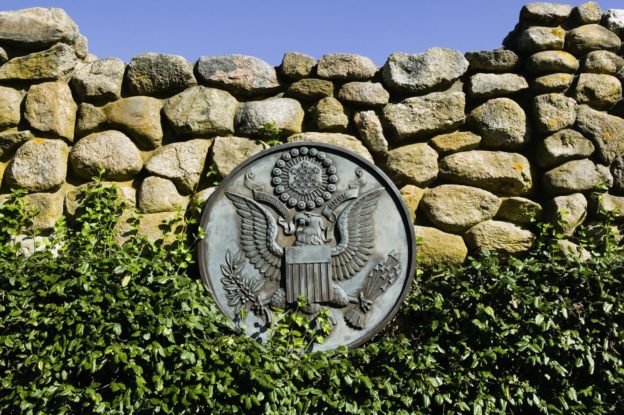
So many walls these days. The Israeli security one. The one President Trump wants to build along the Mexican border. The “Wall of Steel” erected around London’s Winfield House, where the president spent a night last week. And that older, conceptual wall, the one separating “church” and state – or, put more precisely, religion and government.
Interestingly, the U.S. Constitution nowhere refers to such a construct. It was erected, piecemeal, over the years, its popularization beginning with its use by Thomas Jefferson, in an 1802 letter.
When Justice Anthony Kennedy announced last month that he would be retiring from the Supreme Court, while Chicken Little was apparently unavailable, there was no lack of squawking in some circles over the imminent falling of the sky. The specter of a conservative-leaning High Court left some commentators and legislators aghast.
And they weren’t much mollified by the president’s nomination of Judge Brett Kavanaugh to replace Justice Kennedy, even though the nominee was regarded by some conservatives as not sufficiently on board with their program.
House Minority Leader Nancy Pelosi tweeted that Judge Kavanaugh’s confirmation would prove “a destructive tool on a generation of progress for workers, women… communities of color & families.” Democratic Senator Richard Blumenthal attributed to the nominee, “a very extreme hostility to many of the precious rights and liberties that make our nation great.” And so it went.
But, despite the harsh interrogation Mr. Kavanaugh will face from the Senate Judiciary Committee, and barring a revelation that he tortures small animals in his spare time, the judge is likely to be confirmed as the newest member of the High Court,.
The nominee’s non-fans and fans alike seem focused on what his joining the Court will mean for the 1973 “right to privacy” Roe v. Wade decision, and on his past position regarding presidential privilege. But what might matter most, especially to those of us who hold conservative social and moral positions, will be a Justice Kavanaugh’s approach to the aforementioned wall. There is some evidence that he feels it might stretch too high.
The separation of religion and state was originally binding only on the federal government. After the Civil War, though, the 14th amendment made all states subject to rule by the federal Constitution, opening the way for courts to apply to the states the First Amendment’s prohibition of laws “respecting an establishment of religion, or prohibiting the free exercise thereof.”
That second phrase, the “free exercise” clause, is likely to play a major role in future Supreme Court decisions.
The current High Court has already moved a bit away from seeing that barrier as extending into the stratosphere. It ruled that a closely-held, for-profit religious company should not have to provide its employees with insurance covering services that go against the company owners’ faith. And that a church could access state funds to build a playground. And that members of a Colorado commission had shown “hostility” and “disrespect” for the religious views of a baker who declined to make a wedding cake for a ceremony that offended his religious beliefs.
The likelihood that respect for the beliefs of religious Americans will continue to be a prominent feature of the future High Court is important.
Because, in the contemporary libertine social climate, religious Americans are finding themselves facing litigation aimed at forcing them, in their businesses, and even their private lives, to defer to objectionable societal attitudes. They are discriminated against by ad hoc zoning ordinances wielded by prejudiced people. They are assailed for wanting to educate their children as they see fit, and are called bigots for their sincere beliefs about proper human conduct.
There will continue to be division among Americans over the proper relation of religious convictions to the body politic and the lives of individuals. But a socially conservative-majority Supreme Court, we can reasonably hope, will take religious Americans’ concerns fully into consideration as it deliberates on religious rights cases brought before it.
Thomas Jefferson may have made the concept of a “wall” between religion and government famous, but the metaphor’s earliest use was in 1644, when Roger Williams, the founder of the Colony of Rhode Island and Providence Plantations (which would become the state of Rhode Island) wrote that “[A] hedge or wall of separation between the garden of the church and the wilderness of the world” was necessary to ensure colonists’ freedom of religion.
I think his first mashal is the better one. “Hedge” conjures a less charged image than “wall.”
And hedges, as we all know, need occasional trimming.
© 2018 Hamodia
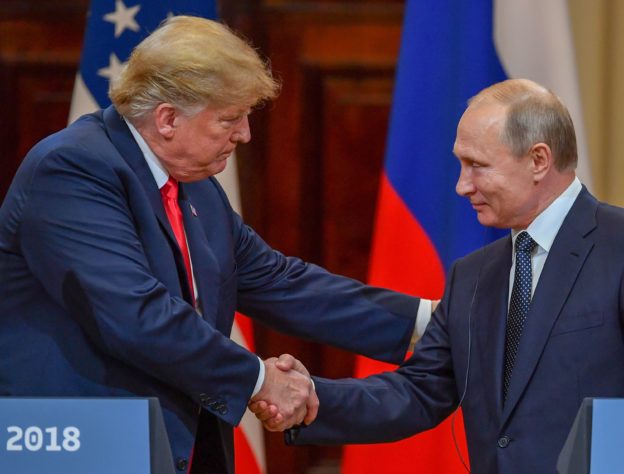
The latest offering in my Yiddish-themed column at Tablet can be read here.

An article of mine about alliances of Muslims and Orthodox Jews, both in Israel and in the U.S. appears at Forward, and can be read here.
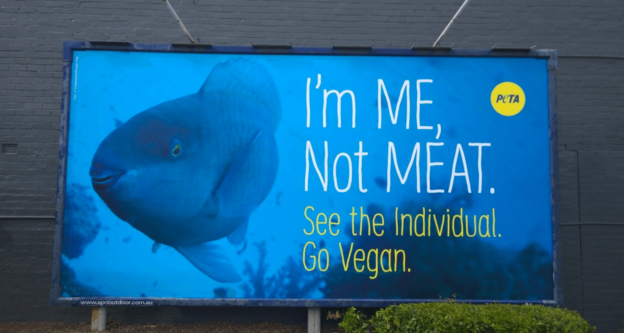
I was accosted recently on the Staten Island Ferry by a large fish.
Well, not exactly. It was actually a large photograph of a fish, on a poster carrying the legend: “I’m ME, not MEAT. See the individual. Go vegan.”
Yes, “People for the Ethical Treatment of Animals,” or PETA, has taken its efforts to the high seas. And, although some of the other animals featured on similar posters in the “I’m ME” campaign elsewhere are not particularly charming – it’s hard to make a cow or chicken (much less a lobster) look friendly – the fish whose gaze met mine as I took a seat on the boat and looked to my right was decidedly endearing.
Because he (she?) was smiling.
Or appeared to be. That’s because the sea creatures Hashem created include not just astoundingly colorful and morphologically remarkable species but some that have what strike humans as expressive, almost human, faces. Some look angry, others perplexed – others, like the one on the poster, happy, friendly.
None of those faces, though, in fact reflects any of those human traits, any more than a smiley-face sticker means the sticker is happy. We might be able to tell when a dog is pleased, but when we imagine animals expressing truly human emotions, we are unconsciously anthropomorphizing them – attributing quintessentially human traits to creatures lacking them. There are photographs of “smiling” sharks too.
Of course, trying to convince people that, as PETA’s founder and president Ingrid Newkirk once famously put it, “A rat is a pig is a dog is a boy,” is the group’s raison d’être.
It even went so far, in 2003, to promote what it called its “Holocaust on Your Plate” campaign, comparing the meat processing industry to Churban Europa. The traveling exhibit juxtaposed World War II death camp photographs with scenes in animal slaughter facilities.
Emaciated men were shown next to a gaggle of chickens; pigs behind bars, beside starving children behind barbed wire; mounds of human remains beside mounds of cow carcasses. In one panel, above the legend “Baby Butchers,” mothers and children in striped garb were shown staring through the barbed wire of a concentration camp; alongside them, a similar shot of caged… piglets.
Ms. Newkirk once commented that “Six million Jews died in concentration camps, but six billion broiler chickens will die this year in slaughterhouses.” Try wrapping a normal brain around that comparison.
A half-hearted “apology” eventually came, but only for the “pain” the exhibit may have caused. Ms. Newkirk expressed her surprise at the negative reaction. She had “truly believed,” she wrote, “that a large segment of the Jewish community would support” the exhibit, and was “bowled over by the negative reception.” Disturbingly, she laid responsibility for the ill-advised campaign on “PETA staff [who] were Jewish.” Ah, the Jews.
A longtime and still employed slogan of the group, in fact, is “Meat is Murder.” But it’s not. Meat is food. At least since the Mabul, the Torah not only permits meat-eating, it encourages it on Shabbos and Yamim Tovim as a means of enjoying and hence showing honor to holy times.
Few if any religious cultures are as concerned with animals as our mesorah. Not only were two of the three Avos, not to mention Moshe Rabbeinu, caring shepherds, but there is a halachic prohibition of tzaar baalei chaim.
And in actual practice, observant Jews are exquisitely sensitive to animal well-being. I recall as a young boy how my father scooped two injured birds from a street and brought them home to care for them. In my own home, even insects are captured and released rather than killed. (I won’t subject readers again to the menagerie of pets – the goat, iguana, tarantula and assortment of rodents – the Shafran family has hosted. Sorry, guess I just did.) I am careful, as per the Talmud’s exhortation regarding animals, to feed my own tropical fish before I sit down myself to dinner.
But the Torah is clear that animals are for human use. We can hold them captive, we can work them and we can eat them. We can, indeed must, when there is a Beis Hamikdash, bring them as korbanos.
The “PETA Principle,” paralleling animals with humans, subtly lies at the root of much that is wrong with our world. But humans alone make moral choices; animals do not. And conflating the two worlds shows disdain for the specialness of the human being.
A rat may be, in a way, a pig, and a pig a dog.
None of them, though, is a boy.
And fishes don’t smile.
© 2018 Hamodia

The latest column in my Yiddish-themed series at Tablet, can be read here.
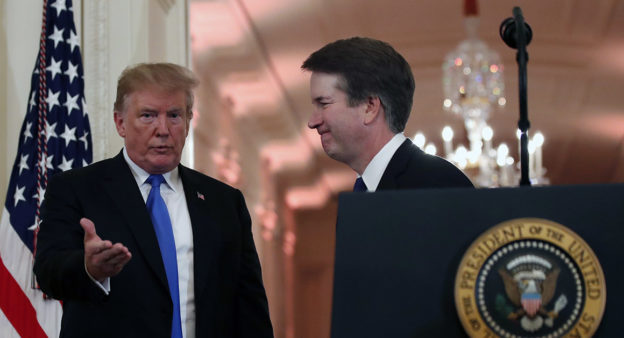
When Justice Anthony Kennedy announced his retirement from the Supreme Court, many immediately predicted the worst. NPR’s Nina Totenberg, channeling R.E.M., proclaimed it “the end of the world as we know it.”
After President Trump nominated Judge Brett Kavanaugh to replace Justice Kennedy, Ms. Totenberg admitted that the nominee was “incredibly charming” “enormously skilled” and “decent.”…
The rest of this article, which appears at Forward, can be read here.
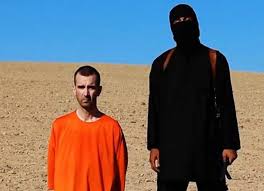
The third time proved the charm. President Trump’s travel ban received the hechsher of the highest court in the land.
As well it should have.
True, in the years since 9/11, no one in the United States has been killed in a terrorist attack by anyone from the seven countries subject to the president’s executive order (North Korea, Syria, Iran, Yemen, Libya, Somalia and Venezuela). And true, too, that Egypt, Saudi Arabia, and the United Arab Emirates, countries from which the 9/11 attackers hailed, are not on the list. Likewise true, the U.S. already has strong vetting procedures for all immigrants from a host of countries.
But there were three non-fatal attacks by people connected to Iran or Somalia. And the bottom line, as the Court held, is that an American president has the right to decide what countries he feels cannot prevent the export of terrorists.
The key to the legal muster-passing of the travel ban’s third iteration was its devolvement from a “Muslim ban,” which would have branded an entire religion and all its adherents dangerous, to a ban on citizens of specific countries. Adding to the non-Muslim nature of the ban is the fact that the presidential order affects a mere estimated 8.2 percent of the world’s Muslims.
The closeness of the Supreme Court vote was largely due to the question of whether to give weight to the president’s campaign rhetoric about Muslims, which was at times rather harsh.
I’m not inclined to ascribe to President Trump true animus for Islam and Muslims. I suspect that some of his past intemperate words were innocent if inelegant attempts to vilify radical Islamists, those who murder and maim in the name of Islam, who richly deserve opprobrium.
In any event, a majority of the Court felt that the rhetoric, some of which persisted even after the presidential election, was not pertinent to the order before them, which made no mention at all of any religion.
That wasn’t the feeling of four justices. Justice Sonia Sotomayor, in a dissent, notably used President Trump’s inflammatory words about Muslims to underscore what she asserted were the “stark parallels” between the majority opinion and one of the high court’s most shameful moments: Korematsu v. United States, the decision that upheld the rounding up and internment of Japanese Americans during World War II.
That comparison, though, was, to put it politely, bewildering. The Korematsu decision concerned the uprooting of American citizens and their effective incarceration in detention camps. Halting the provision of visas to citizens of other countries isn’t just in a different category, it’s on a different planet.
My first reaction to the decision was satisfaction with the Court majority’s understanding of its role in a case like this: to judge only the order at issue.
My second one, though, was to engage in a bizarre thought experiment. What if the enemy-identifying rhetoric of a president – unimaginable as it would be for the current one – were aimed at Judaism and Jews? What if a (chalilah) President Farrakhan had declared in campaign speeches that “Judaism hates us!” and ordered a ban on Jews – but then, under legal constraints, narrowed it down to a ban on people from Israel, France and the U.K.? And the High Court, asked to rule on the ban, chose to focus exclusively on the new order’s mentioning of only countries, not a people or religion? How would we feel?
Crazy scenario? Surely. Still and all, such wild, discomfiting imaginings are part and parcel of objective critical thinking.
So, though, is recognizing the qualitative difference between that fever dream and the reality today – a difference that makes quite a difference: There are no Jews, much less a Jewish movement, bent on murder and mayhem. And Israel, France and the U.K. are not incubators of terrorism.
The vast majority of Muslims, both here in the U.S. and overseas, are not proponents of violence. But there can be no denying that much terrorism today emerges from the foul belief that Islam requires hatred and killing of “infidels”; no denying that the only religious credo routinely bellowed before attacks on innocents is an Islamic one.
And, unfortunately, the tiny percentage of the nearly 2 billion Muslims who subscribe to a violent theology cannot erase those facts. I feel sympathy, and think we all should, for innocent Muslims who have to live with that ugly monster on their backs, misrepresenting the faith they live daily and peacefully.
The monster, though, is real. And it birthed a travel ban.
© 2018 Hamodia

Hamodia opted to not publish my column submission for this week, so I post it here instead.
The two thirds of the American populace that objected to the policy of removing children from their illegal immigrant parents at the southern border emitted a collective sigh of relief last week. President Trump, in a stunning turnabout, signed an executive order intended to stop the practice.
Although there are logistical and legal issues still to be resolved and subsequent presidential tweets to try to reconcile with the executive order, the president demonstrated the courage to publicly jettison his repeated claim that he was powerless to act, that only a larger action by Democrats in Congress could end the separation policy. He deserves credit for that move.
Before his reversal, though, the administration’s policy was to treat people who entered the country illegally as felons rather than civil violation offenders (first-time illegal entry is a misdemeanor). Children, even very young ones, were taken from their parents against their will, and the policy was broadly decried. Among the decriers was Agudath Israel of America, which expressed its “deep concern and disappointment” over the resultant “profound suffering and pain to both parents and children.”
The Agudah statement acknowledged that the “problem of illegal immigration is a serious one, and we support reasonable efforts by the administration and legislature to effectively stem the flow of would-be immigrants who have not been accepted through the legal immigration system.” But it contended that “seeking to enforce our statutes does not relieve us of [our] moral obligation” to prevent “the extreme anguish, fear and trauma born of separating undocumented immigrant family members, which is particularly harmful to children.”
The reaction to Agudath Israel’s statement was broad and diverse. There were many expressions of gratitude for its issuance, from both members of our community and others. But there were a number of negative reactions too. I serve as the Agudah’s liaison with the media and public, and so those reactions landed in my inbox, some with quite a thud.
They confirmed something that (as regular readers of this space well know) has pained me for years: the prevalence of gross, fervent and unthinking partisanship.
A legitimate question asked by several people was why the Agudah felt the need to comment on the situation at all. The organization does not, of course, regularly comment on events that lack direct impact on the Jewish community.
The knowledge, though, that wailing children were being taken from their parents was wrenching not only to a broad swath of the larger American public but to a wide swath, too, of Klal Yisrael – rachmanim, after all, bnei rachmanim. So, it was not inappropriate for us to register our pain. And, with scores of religious groups registering their own protests of the policy, some of them quite harshly, it was felt that, should the Agudah say nothing, it would be assumed to approve of the policy.
Striking, though, was the lack of information that underlay some other (often vociferous) complaints. Several people, “informed” presumably by news sources that richly deserve the adjective “fake,” insisted that “the law” requires family breakups, and that the policy of considering unlawful entrants to be criminals had been in place under previous administrations.
When I explained that there was and is no such law, and that the policy of automatically considering illegal entrants to our country deserving of incarceration and the seizing of their children was mere weeks old, they seemed taken aback.
Others apprised us that a “deep state” plot, or Democratic Party conspiracy, was clearly at play; others were upset that we dared “attack” a sitting president, although we took care in our statement to not even mention the president or attorney general, and lamented only the upshot of an unfortunate policy. When, in past years, the Agudah issued statements critical of the Obama administration for joining the U.N. Human Rights Council or fostering the Iran Deal, no complaints, to the best of my memory, were registered.
Some correspondents, seemingly having read only part of the statement, interpreted the Agudah’s expression of humanitarian concern as advocacy for “open borders.” As if there are only two options: wrenching kids from their parents’ arms or having the country overrun by a horde of Aztec invaders.
The acutely politicized, black-and-white, “us-and-them” and often woefully misinformed mentality in parts of our world is lamentable. Intelligent, informed opinions on current events cannot be gleaned from talk radio hosts or blatantly partisan news organizations. Astuteness requires middos tovos, the consideration of different points of view and the application of that most important of skills: critical thinking.
And their lack poorly serves the mission of Klal Yisrael.
© 2018 Rabbi Avi Shafran